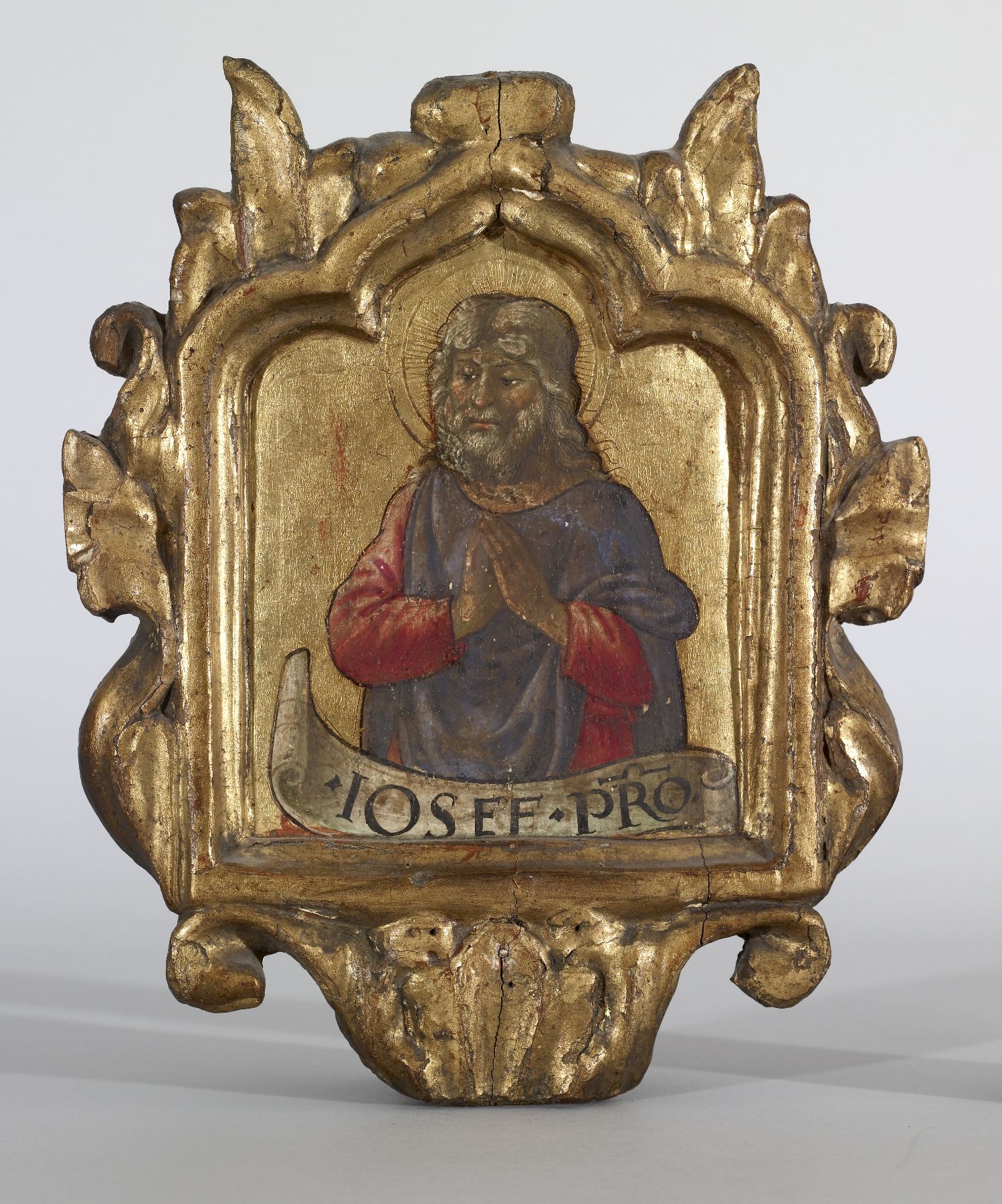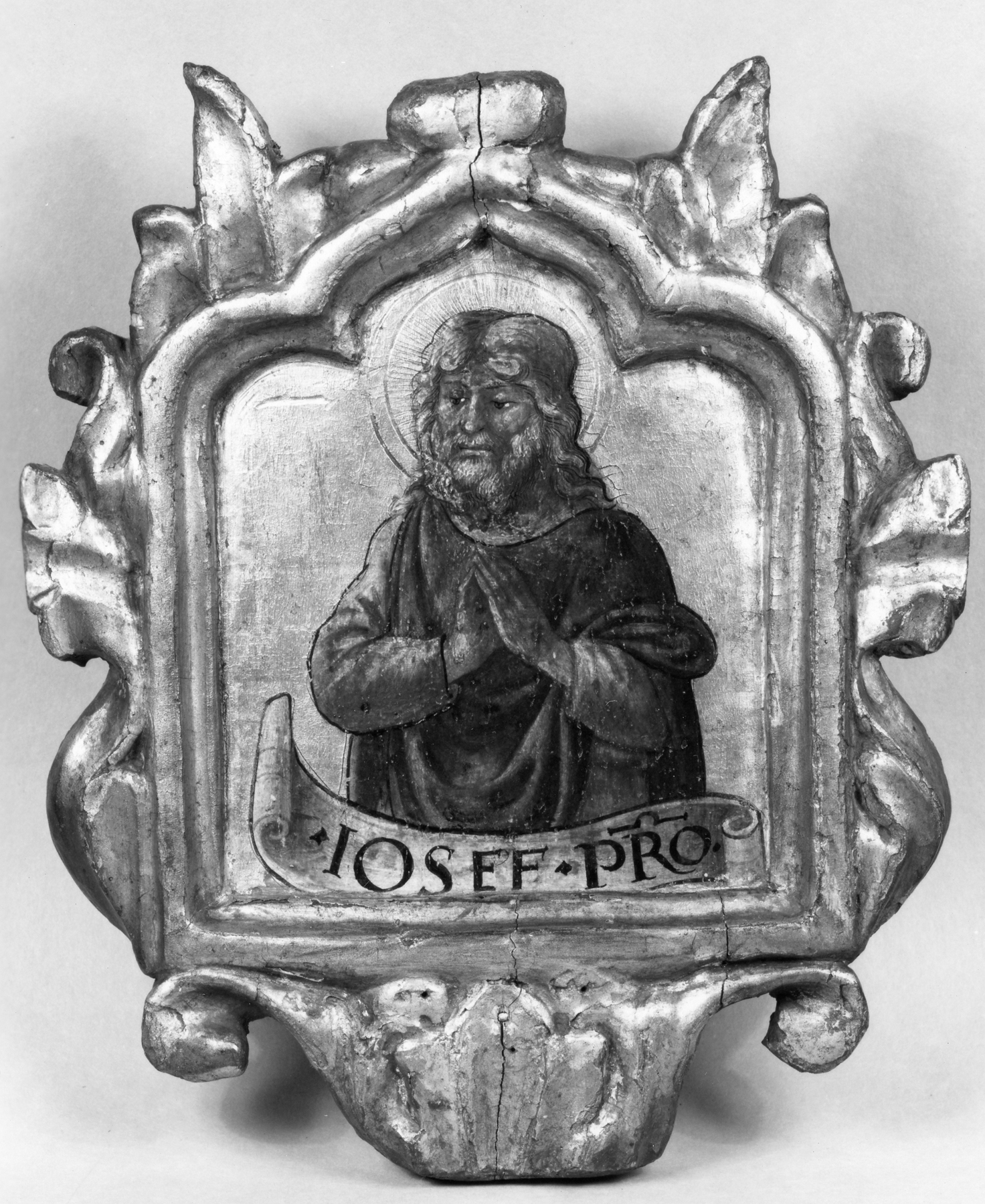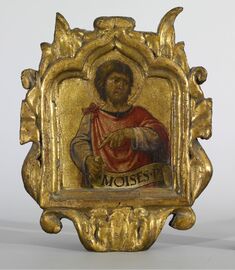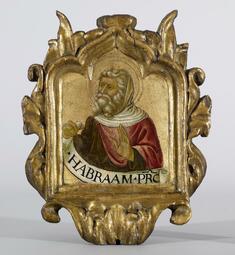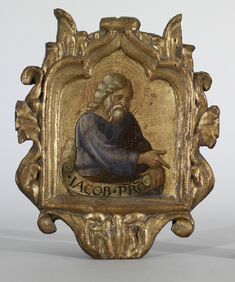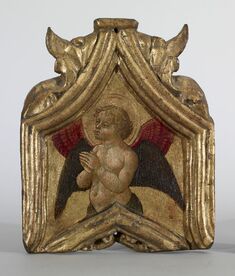The Prophet Joseph
(Renaissance Europe )
Together with 37.620A, B and 37.620D-F, this panel of the Prophet Joseph comes from the frame of a monumental polyptych, or multi-paneled altarpiece, by Niccolò da Foligno, one of the foremost painters in the Central Italian regions of Umbria and the Marches in the mid- to late 1400s. All of the panels were originally installed as pinnacles (crowning elements) above the altarpiece’s larger central panels. In depicting Old Testament prophets—figures who relayed God’s messages and foretold the eventual arrival of Christ—they acted as precursors to subject represented in the main portion of the altarpiece, likely an episode from the life of Christ or the Virgin Mary. The main panels from the altarpiece to which the pinnacles belonged remains lost or unidentified. For an intact altarpiece by Niccolò da Foligno with a similar set of pinnacles, see the example at the Vatican Picture Gallery in Rome.
Inscription
Provenance
Provenance (from the French provenir, 'to come from/forth') is the chronology of the ownership, custody, or location of a historical object. Learn more about provenance at the Walters.
Don Marcello Massarenti Collection, Rome [date and mode of acquisition unknown] [1881 catalogue: no. 168; 1897 catalogue: no. 24]; Henry Walters, Baltimore, 1902, by purchase; Walters Art Museum, 1931, by bequest.
Conservation
| Date | Description | Narrative |
|---|---|---|
| Examination | examined for condition |
Geographies
Italy, Umbria (Place of Origin)
Measurements
Approx. painted surface H: 5 5/8 x W: 4 1/2 in. (14.3 x 11.4 cm); Approx. panel H: 9 13/16 x W: 7 13/16 x D: 11/16 in. (24.9 x 19.9 x 1.8 cm)
Credit Line
Acquired by Henry Walters with the Massarenti Collection, 1902
Location in Museum
Not on view
Accession Number
In libraries, galleries, museums, and archives, an accession number is a unique identifier assigned to each object in the collection.
In libraries, galleries, museums, and archives, an accession number is a unique identifier assigned to each object in the collection.
37.620C

